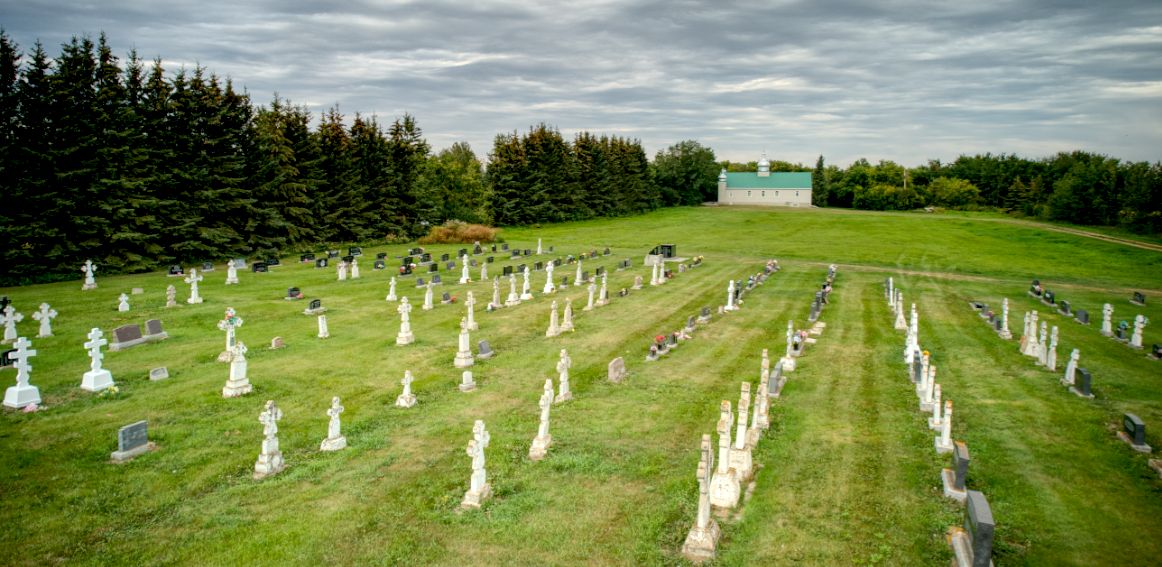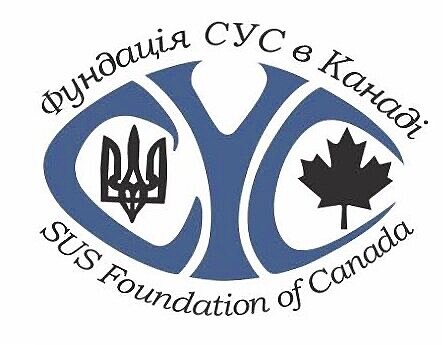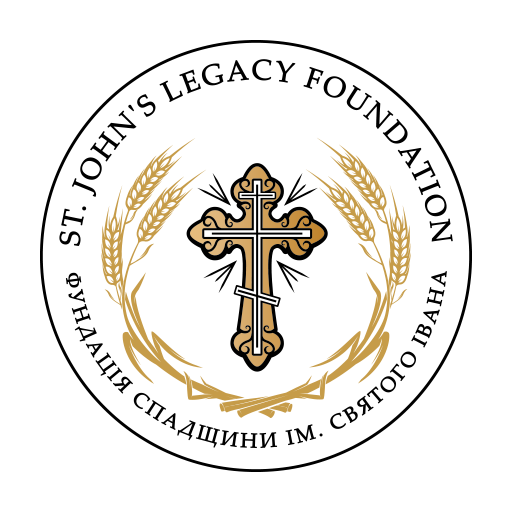An organizational meeting was held in late 1904, as by December of that year a request had been submitted to the federal government along with a ten-dollar registration fee for a land grant on which to build a church and cemetery. In a letter dated 5 July 1905, the Commissioner of Dominion Lands at the Department of the Interior in Ottawa formally approved the grant, a decision that petitioners Wasyl Makowichuk and Ivan Topechka were notified about on 18 July.
Supporters of the congregation then began raising money and hauling rocks and timber to site where the sanctuary was to be built on a four-acre parcel of land. Work on a log church (24 ft X 32 feet in size) started in earnest in 1906, with congregation members providing the labour. The cruciform structure had a small dome over the sanctuary and was accessed by an entryway on the south side, though this may have been added somewhat. By 1908, when doors and windows were installed and the interior was partially completed, an inaugural service could be held in the new sanctuary with Rev. L. Zubach of the Russian Orthodox Mission officiating.
The congregation applied for provincial incorporation on 7 May 1910, which was approved on 18 May in the name of “The Ruthenian Greek Orthodox Church of Saint Dymytria” at Soda Lake. In 1911-1912 a belfry was constructed of logs, siding was applied to the exterior, and more improvements were made to the interior. In time, the church was painted inside, and an iconostasis installed as time and money became available for the sanctuary's completion. Various Russian Orthodox priests served the community in the early years on an itinerant basis, an arrangement that proved to be increasingly unsatisfactory with some members of St. Dymytria Church.
In 1931 the Ukrainophile faction in the Luzan congregation formally broke away to build their own church, the painful split dividing families and neighbours. The disaffected group subsequently erected their sanctuary one mile west of St. Dymytria, dedicating it to the Feast Day of the Holy Ascension and registering it with the Ukrainian Greek Orthodox Church of Canada. It became known locally as the “New Pruth” Church, to distinguish it from the “Old Pruth” or Luzan church.
In 1960 the congregation reported that it had a membership of 66 families, comprising a total of 211 individuals. Then, tragically, on 5 December 1961, the original St. Dymytria church was destroyed by fire. Quickly rebounding from this disaster, the members set to work building a new sanctuary the following summer [the contractor was apparently Frunchak, from Edmonton], completing a modern three-domed structure with a stucco exterior the following year on the same spot where the old church had stood. This larger edifice was formally consecrated by Archbishop Andrew with Fr. O. Olekshy on the Patron Saint's Day of the parish, 8 November 1970.
In the meantime, in 1966 the congregation had become part of the Willingdon Parochial District and its name was officially changed from the Ruthenian Greek Orthodox Church of St. Dymytria to St. Demetrius Ukrainian Orthodox Church (Luzan).
Over the years various improvements have been made to the sanctuary and church property. The old Pruth School was moved to the site in the mid-1960s to serve as a parish hall, and a new fence and entry gateway have been installed, along with signage for the cemetery, which has also been landscaped. On 26 June 2005 a commemorative cairn and an unmarked graves marker were dedicated in the churchyard by Archbishop John in honour of Alberta’s centennial.


Play Memory Eternal Chant
GPS Co-ordinates: 53.745932, -112.120832
Affiliation: Ukrainian Orthodox Church of Canada





